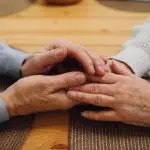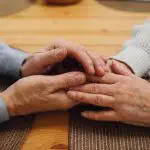Are you looking to add some handmade charm to your dining table? Sewing your own placemats with batting is a great way to do just that. Not only will you have unique and personalized placemats, but the batting will also provide extra cushioning and protection for your table.
To get started, gather your supplies including fabric, batting, thread, and a sewing machine. Determine the size and shape of your placemats and cut your fabric and batting accordingly.
From there, layer the materials and get ready to sew. With a little bit of time and effort, you’ll have beautiful placemats that you’ll be proud to use for years to come.
Table of Contents
Gather Supplies
To begin, gather all of the necessary supplies for sewing your placemats, including fabric, batting, thread, and a sewing machine. You’ll also need a rotary cutter, cutting mat, and ruler to measure and cut your fabric and batting.
Make sure to choose a fabric that’s durable and easy to clean, such as cotton or linen. After gathering all of your supplies, wash and iron your fabric to remove any wrinkles or dirt.
Then, measure and cut your fabric and batting to the desired size of your placemats. A standard size for placemats is 12 inches by 18 inches, but you can adjust the size to fit your specific needs.
After cutting your fabric and batting, place the batting in between two pieces of fabric, making sure the right sides of the fabric are facing out. Pin the layers together and sew around the edges, leaving a small opening to turn the placemat right side out.
Press the placemat with an iron and sew the opening closed. Repeat these steps for as many placemats as you need.
Measure and Cut Fabric and Batting
First, you’ll need to grab your measuring tape and figure out the dimensions of your table. This will help you determine how large to make your placemats. Once you have the measurements, add 1 inch to both the length and width for seam allowance. For example, if your table measures 30 inches by 60 inches, your placemats should measure 31 inches by 61 inches.
Next, it’s time to cut your fabric and batting to size. Lay your fabric out on a flat surface and use a rotary cutter or scissors to cut it to the desired dimensions. Then, cut your batting to the same size as your fabric. Make sure to cut both the fabric and batting straight and even.
To help you visualize the process, here’s a table that shows the steps for measuring and cutting fabric and batting:
| Step | Action |
|---|---|
| 1 | Measure your table dimensions |
| 2 | Add 1 inch to both length and width for seam allowance |
| 3 | Cut fabric to desired dimensions |
| 4 | Cut batting to same size as fabric |
| 5 | Make sure both fabric and batting are straight and even |
By following these steps and using the table as a guide, you’ll be on your way to creating beautiful placemats with batting. Remember to take your time and double-check your measurements to ensure a perfect fit for your table.
Layer the Materials
Now that you’ve got your fabric and batting cut to size, it’s time to layer them together to create a sturdy base for your placemats.
Start by laying your first piece of fabric right side down on your work surface. Then, place your batting on top of the fabric, making sure it’s centered and smooth.
Next, place your second piece of fabric right side up on top of the batting. The right sides of both fabrics should now be facing each other, with the batting sandwiched in between. Pin all three layers together around the edges to hold them in place while you sew.
Once everything is pinned, sew around the edges of the placemat, leaving a small opening to turn it right side out.
Trim the corners and turn the placemat right side out through the opening.
Finally, tuck in the edges of the opening and sew it closed. Your placemat is now complete and ready to use!
Sew the Placemats
Now it’s time to sew your placemats together! Start by sewing around the edges of your placemats, leaving a gap for turning.
Once you’ve sewn around the edges, turn the placemats right side out through the gap. Don’t forget to press the edges with an iron before sewing the gap closed.
Sew Around the Edges
Start by pinning all layers together and then stitch around the edges, leaving a small opening for turning. Make sure to sew slowly and carefully, ensuring all layers are caught in the stitching.
Once you’ve stitched around the edges, use scissors to trim the corners, being careful not to cut through the stitching. Next, turn the placemat right side out through the small opening.
Use a blunt object, like the tip of a pen or a chopstick, to push out the corners and edges. Finally, stitch the small opening closed using a slip stitch.
Your placemat with batting’s now complete and ready to use for your next meal!
Leave a Gap for Turning
Before closing up the edges, make sure to leave a small gap for turning the fabric right side out. This is an important step in the placemat-making process. If you forget to leave a gap, you’ll have a difficult time getting the placemat to look right.
To leave a gap, simply stop sewing a few inches before you reach the end of the placemat. You can use pins or clips to mark where the gap will be. Make sure to reinforce the stitching on either side of the gap so that it doesn’t come undone when you turn the placemat right side out.
Once you’ve finished sewing, trim the corners and turn the placemat right side out through the gap. Finally, you can hand stitch the gap closed or use your sewing machine to finish it off. And that’s it! You’ve successfully sewn a placemat with batting.
Turn the Placemats Right Side Out
Once you’ve left a gap for turning, gently pull the fabric through the opening to turn the placemat right side out. This step requires patience and care to avoid ripping the seams or damaging the fabric. As you pull the fabric through the gap, use your fingers or a blunt tool to gently push out the corners of the placemat to create a neat, square shape.
Once the placemat is right side out, use a chopstick or a similar tool to carefully push out any remaining corners or curves. Completing this step can be satisfying and rewarding, as you see your placemats taking shape.
Here are some emotional responses you may experience:
- Excitement: Seeing the placemats right side out can create a sense of excitement, as you get closer to the finished product.
- Pride: Successfully turning the placemats right side out can make you feel proud of your sewing skills and your ability to create something beautiful.
- Relief: If you were worried about damaging the placemats during this step, successfully completing it can bring a sense of relief and calm.
- Anticipation: Now that the placemats are right side out, you can start to imagine how they’ll look on your table, which can create a sense of anticipation and excitement for using them.
Finish the Placemats
To achieve a polished look, it’s important to sew around the edges of the placemats, leaving a small gap for turning them right side out. Once you’ve done this, it’s time to finish the placemats.
To finish the placemats, you’ll need to close the gap that was left for turning them right side out. One way to do this is to use a ladder stitch. This stitch is virtually invisible and will give your placemats a seamless finish.
To do this, thread a needle with a matching thread and knot the end. Then, insert the needle into the gap and pull it through. Take a small stitch on one side of the gap, then another on the other side, and continue this way until you reach the end of the gap.
After you’ve closed the gap, your placemats are almost done! The last step is to press them with an iron. This will help to smooth out any wrinkles and give them a crisp, clean look.
And that’s it! Your placemats are now ready to be used and enjoyed for years to come. With a little bit of time and effort, you can create beautiful placemats that’ll impress your guests and add a touch of elegance to your table.
Add Embellishments (Optional)
You can elevate the elegance of your placemats by adding embellishments, such as embroidery, lace, or ribbon. These decorative touches can make your placemats look more polished and sophisticated, and they allow you to express your creativity and add a personal touch to your home décor.
To add embellishments to your placemats, you’ll need to choose a design or pattern that complements the fabric you’ve chosen. For example, if you’ve opted for a floral print, you may want to add some delicate lace to the edges of your placemats. Alternatively, if you’ve chosen a solid color, you could add some bold embroidery in a contrasting shade to make your placemats pop.
Once you’ve selected your embellishments, you can begin sewing them onto your placemats. Be sure to use a needle and thread that match your fabric and embellishments to ensure a seamless finish.
Whether you choose to add a simple strip of ribbon or an intricate embroidery design, your placemats will be a beautiful addition to your dining table.
Care for Your New Placemats
When using your new placemats, make sure to wipe them down with a damp cloth after each use to keep them looking fresh and clean. This is especially important if you’ve spilled any food or drink on them, as leaving stains to set can make them more difficult to remove later.
If you notice any stubborn stains, you can try using a mild soap solution and a soft-bristled brush to gently scrub the affected area.
To prolong the life of your new placemats, it’s also a good idea to avoid exposing them to direct sunlight for extended periods of time. This can cause the colors to fade over time, and may even weaken the fabric.
Instead, store them in a cool, dry place when not in use, and avoid stacking them too tightly to prevent any creases or wrinkles from forming.
If you need to wash your placemats, be sure to follow the care instructions on the label. In general, it’s best to wash them on a gentle cycle with mild detergent, and to avoid using any fabric softeners or bleach.
You can tumble dry them on a low heat setting or hang them up to air dry. With the proper care, your new placemats will look great for years to come!
- The History and Style of the 1940s Gabardine Ricky Jacket - June 24, 2025
- The Best Women’s Gabardine Trousers for a Polished, Professional Look - June 24, 2025
- Stone Island’s Use of Gabardine: A Technical Approach to a Classic Fabric - June 24, 2025





